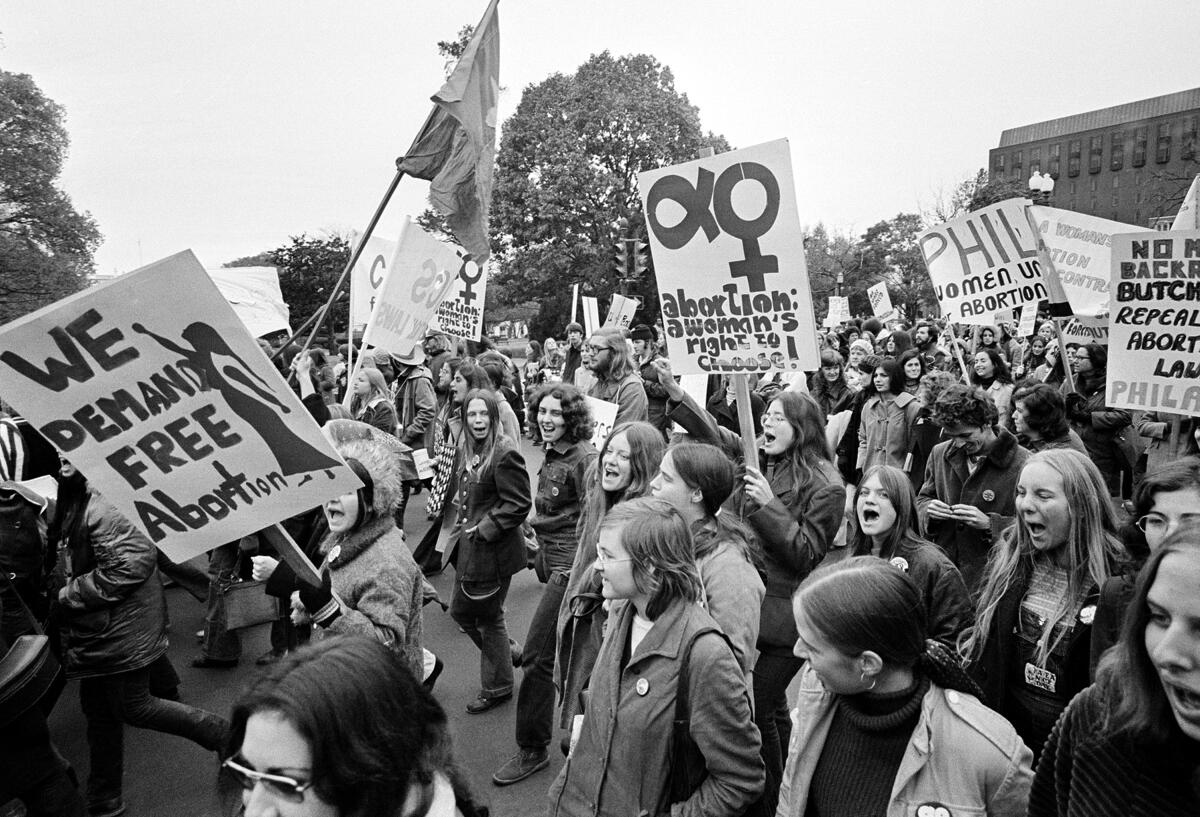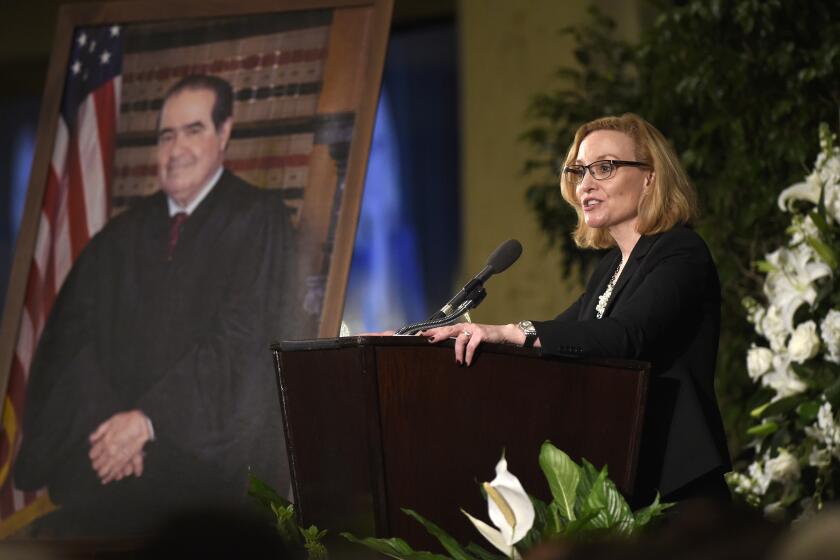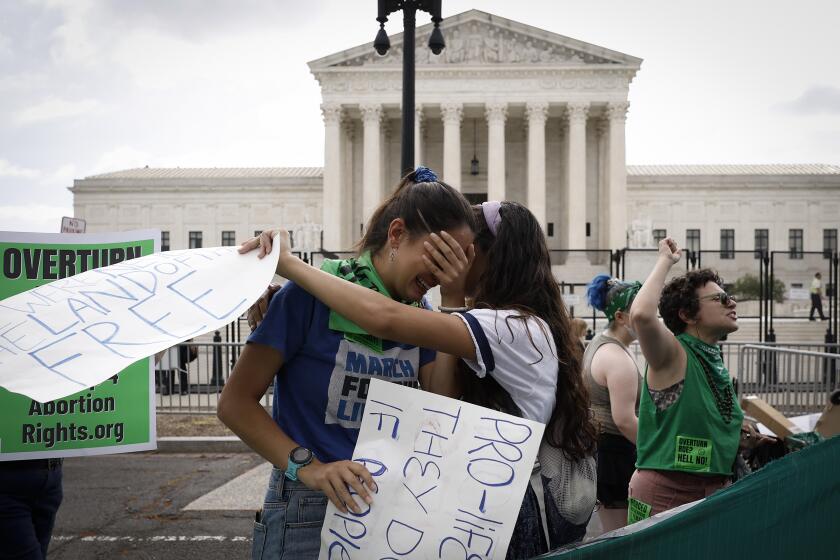Abortion and the Supreme Court: A short legal history of Roe

- Share via
WASHINGTON — The early American laws prohibiting abortion were adopted in the 19th century in an era when women could not vote or hold elective office.
Many of them made abortion a crime, except when it was done for the purpose of saving the mother’s life.
Those strict bans came under attack in the late 1960s as part of the women’s liberation movement.
Roe vs. Wade went from ‘settled’ law to overruled in a few years, thanks to four unexpected developments.
Several states, including California, adopted laws that permitted doctors to terminate pregnancies for several reasons, including in cases of rape or when the woman’s health was endangered.
But when the Supreme Court first weighed a constitutional challenge to abortion laws, only four states, led by New York, had legalized the procedure.
The issue came before a court that was in transition.
Five justices remained from the liberal court led by Chief Justice Earl Warren, and they were joined by four new appointees of President Nixon.
In the fall of 1971, when the abortion case was heard for the first time, the justices were focused on an equally momentous clash over the fate of the death penalty.
In June 1972, the same month as the Watergate break-in, the Supreme Court struck down all the death penalty laws in a splintered 5-4 decision, with the Nixon appointees in dissent. The court then agreed to put off a decision on the abortion issue until the next term.
Two of Nixon’s justices had a surprise for their colleagues. Justice Harry Blackmun had been the general counsel for the Mayo Clinic in Minnesota before becoming a judge, and he saw the abortion issue from the viewpoint of a physician.
He did not see why 19th century laws should restrict a doctor from performing a medical procedure that was, by the middle of 20th century, safe and effective.
In a historic reversal, the Supreme Court strikes down a half-century of nationwide abortion rights in the U.S.
Justice Lewis Powell, a prominent lawyer from Richmond, Va., had once comforted a distraught young man at his law firm whose girlfriend had died from a botched abortion. He too thought abortions should be safe and legal.
With Blackmun and Powell on board, there was a clear majority for striking down the laws on abortion.
Chief Justice Warren Burger had assigned the abortion cases to Blackmun, believing he would turn out a careful and modest opinion.
Instead, he wrote an essay on the history of abortion extending back to Greek and Roman times, followed by a set of rules for abortions going forward.
The most significant part of the ruling was added only weeks before the opinion was released in January 1973. It said states may not forbid abortions until “viability,” which occurred about the 28th week of a pregnancy.
Until that point in a pregnancy, “the abortion decision in all its aspects is inherently, and primarily, a medical decision, and basic responsibility for it must rest with the physician,” wrote Blackmun, characterizing it as a matter of doctors’ rights, not women’s rights.
Blackmun did little to explain how the Constitution included a previously unnoticed right to abortion, other than to note the court in the past had cited an implicit right to privacy.
Years later, this failing helped launch a conservative legal movement devoted to the belief the Constitution should be interpreted based on its words and original history. He also rejected the Texas claim that the state had the power to protect the life of the unborn.
“The unborn have never been recognized in the law as persons in the whole sense ... and we don’t agree that, by adopting one theory of life, Texas may override the rights of the pregnant woman.”
That conclusion helped launch the “right to life” movement which, decades later, became a key base of the Republican Party.
More to Read
Get the L.A. Times Politics newsletter
Deeply reported insights into legislation, politics and policy from Sacramento, Washington and beyond. In your inbox three times per week.
You may occasionally receive promotional content from the Los Angeles Times.













